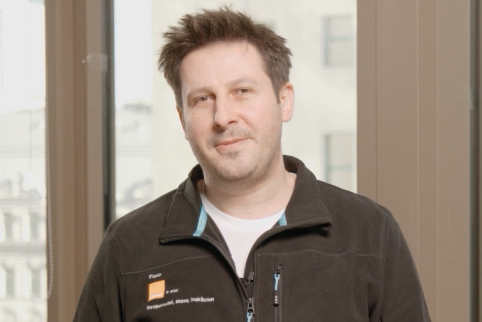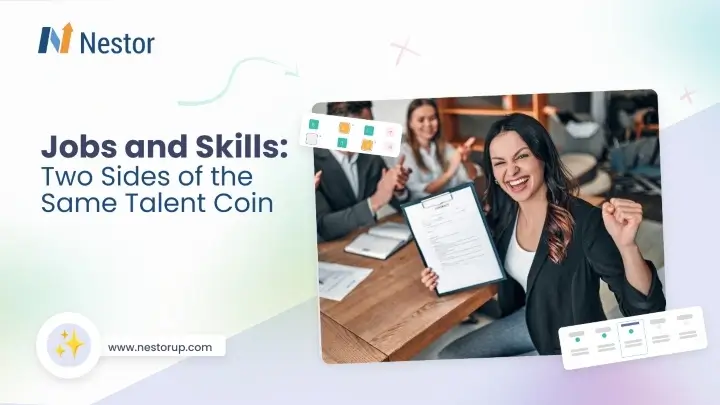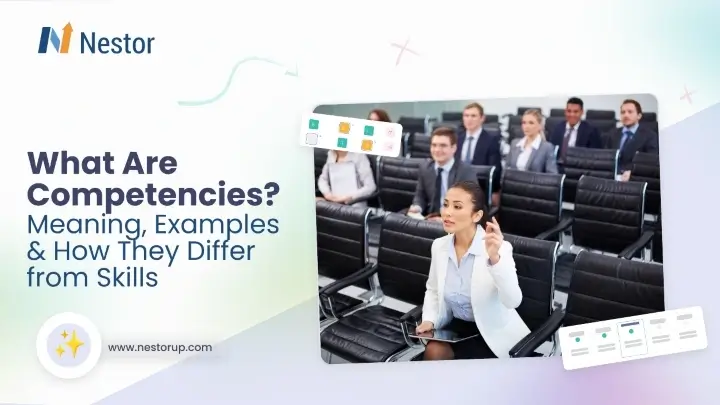
Productivity skills are abilities that, combined with the right behaviors and personal traits, can improve the efficiency and performance of your employees. Or, in other words, productivity skills empower professionals to make the most out of key limited resources, such as time, energy, and attention.
You may think that, given their nature, efficiency and performance are mostly related to technical abilities. But the truth is that high productivity is often based on soft skills. And while the desired technical know-how can change significantly as a result of technological disruptions, soft skills are the ones making a difference in the modern workplace.
With that in mind, we’ll go through some of the top examples of productivity skills while also looking at efficient ways to improve and measure them.
Time Management
Time management is the efficient use of the same limited number of hours everybody has in a day, which directly impacts our short and long-term productivity. While some find that waking up earlier leads to more productive days, others seem to be at their best after sunset or even later.
This is why flexible work schedules and allowing employees to do challenging work during their peak productive time are some of the pillars of time management. Other solutions might include:
- Efficient scheduling: It implies allocating time well, taking into account potential delays and including breaks. A schedule should be flexible enough that changes can easily be made but strict enough that things actually get done.
- Pomodoro technique: This is a simple yet efficient solution that’s been around for decades. It involves dividing tasks into intervals of 25 minutes of work followed by 2-5 minutes of break. Then repeat.
- Break down projects into smaller tasks: Any employee can make use of this simple trick. It is especially useful for larger projects, which seem difficult to approach, and it also contributes to preventing and reducing procrastination.
Task Management
Task management is not a new concept and there’s no point in trying to reinvent the wheel here. It often overlaps with other skills, like prioritizing or breaking down projects. There are tons of free and paid apps available, which, if used well, can help your employees take full charge of their tasks and deadlines.
Key aspects in the process of managing tasks include:
- Setting deadlines: Without deadlines, “work will expand to fill the time allotted for its completion”, according to Parkinson’s Law. This is why something that should take two days can drag on for weeks.
- Time blocking: It’s a simple yet incredibly efficient way through which employees can focus on a single task at a time and also reduce the possibility of being distracted by other colleagues, calls, or meetings.
- Delegating tasks: Encourage your employees to delegate tasks to other team members or even third parties (e.g., freelancers). It will allow them to focus on high-priority projects and learn how to trust their coworkers or other professionals.
Prioritizing
Prioritizing goes hand in hand with time and task management and is based on clarity. It represents the ability to decide which tasks are more important and should take priority over others. When missing, it can bring unnecessary stress among your staff, which, in turn, leads to worse results and productivity.
To prioritize efficiently, encourage the use of the following criteria:
- Task urgency: Projects with short deadlines, for high-level clients, or with a significant impact on business objectives should be first in line.
- Task difficulty: Combined with proper planning and delegation, difficult tasks can be completed successfully by a team of professionals who collaborate well. Breaking it down into smaller milestones is a great tip as well.
- The time needed to complete the task: It’s always better to underpromise and overdeliver than do the exact opposite. Taking into consideration additional delays and unexpected challenges along the way will make a significant difference.
Decision-making
Decision-making relies on having the courage (and being encouraged) to take initiative and responsibility. This soft skill can increase productivity in your organization as both individuals and teams will find and implement solutions together; thus allowing other decision-makers to focus on more important projects or clients.
Here are several steps that HR and people managers can use to transform their team members into better decision-makers:
- Encourage open-mindedness: Teach people to take into account all the variables, think about the consequences, and find the best outcome for the company, their colleagues, and themselves.
- Explore risk analysis: Some workers are more risk-averse while others are risk-takers. To make the right decision, it’s important to have a proper balance. Remind them that brainstorming potential risks with their colleagues is an excellent way to identify and overcome personal biases.
- Don’t rush it: Rushed decisions are rarely the best. But delaying action for too long can cost you a lot in the business world. Help your workforce realize that it’s essential to make the most out of their time without missing opportunities or deadlines due to indecisiveness.
Focus
The digital age has come with many benefits, but it has also taken its toll on people’s attention spans. And, in the new hybrid world, the workplace is not an exception. It’s increasingly harder to focus on a single task for long periods, especially when it is challenging.
But there are still ways to encourage people to leave distractions aside and focus on what really matters:
- Out of sight, out of mind: Encourage employees to keep their phones behind the monitor or anywhere that’s out of sight. It will increase focus and people can still use their devices during breaks.
- Tracking goals & progress: You cannot improve what you do not measure, and establishing clear objectives is part of this process. It also acts as a buffer and prevents the emergence of situations in which the delay of a project only comes up right before the actual deadline.
- Avoid multitasking: Studies have already shown that multi-tasking does not work. It’s important to create a culture in which dealing with a single task is the norm and it will reap benefits in no time.
Communication
Communication has always been a fundamental skill in the workplace, and it is even more relevant in the current hybrid environment. It involves speaking clearly, active listening and it’s a necessary quality for any aspiring leader.
There are many methods to improve personal or corporate communication, including specialized courses or peer feedback. But some of the simplest steps are:
- Create a safe environment: Whether employees delegate tasks, receive them, or have a suggestion, it’s important that they feel safe to ask questions and express themselves.
- Ask for help: Some professionals, even experienced ones, can struggle to do this because they might regard it as a sign of weakness. But asking and offering help is essential for any successful team.
- Offer feedback: Feedback is a great way to show appreciation and gratitude or help somebody else improve. It should always be personalized or adapted to the person receiving it and delivered in a manner that fosters growth and collaboration.
Stress Management
High-stress levels negatively impact the overall physical and mental well-being of your workforce. In fact, in recent years different organizations have started offering personal counseling or other services, which help their employees better handle work-related stress.
Other simple but effective ways to help your staff deal with stress factors are:
- Mindfulness: A common technique that allows people to relax and bring their entire focus to the present moment, on their breath, and let go of other concerns. It’s not so much about doing something but observing and directing awareness toward the present situation.
- Promoting exercise: Taking a 15-minute walk, enjoying some fresh air, or going through a quick workout can reinvigorate and bring back concentration among your employees. It will also boost their mood.
- Open discussion: Encourage managers to have open talks with their people and address the main stress factors and concerns. The manager can help put things into perspective and remind the employee that they are not alone. 1:1s might be the ideal format for these discussions.
This list of productivity skills is not exhaustive by any means, but it highlights some of the key soft skills that directly impact productivity levels in your workplace.
How to measure productivity skills at your workplace and why it’s important
Productivity skills are important for your organization and its workforce because they are transferable. This means employees can take their soft skills across different departments, teams, projects, or even jobs. Encouraging their development is a win-win situation from which both sides benefit in the long term.
Before measuring and setting out to develop or improve your workforce’s productivity skills, you first need to map which abilities are the most relevant for each role and the proficiency level necessary for that role (e.g., beginner, intermediate). For example, an advanced level of communication is essential for the sales or PR department, but for other departments, the intermediate level will be enough. Using the right software is critical to perform these actions.
The Nestor platform is the perfect tool that can help you assess skills at various levels to identify gaps and get actionable insights to course-correct them before turning critical.
After identifying the desired level of productivity skills closely related to a job role, you can measure them and your employees’ progress over time using the following evaluation methods:
- Performance reviews – Make performance reviews a space for managers employees’ discussions focused both on performance and also on personal growth. Understand how your employees’ skills have evolved toward the desired level and set up new personalized development objectives to help them advance in their roles.
- Self-assessment – Allow employees to rate their skills and knowledge for themselves. A self-assessment is a great tool to use because it approaches the skills inventory from a self-perspective. Employees can also express which skills they want to work on improving.
- Peer reviews or personalized feedback – Taking into consideration the work interactions, encourage your co-workers, managers, and any direct reports to provide feedback on an employee’s skill level. This is a great way to have a complete perspective, from various angles on your employees’ skills.

Example of skills set proficiency levels
Another relevant aspect of productivity in the workplace is the point of diminishing returns. Productivity isn’t linear, and more hours, workers, or clients don’t always lead to better results or higher profit margins.
For example, spending 4 highly-productive hours on a project can lead to a better outcome instead of spending 6 or 8 hours, out of which the last 2-3 are low-focus, low-energy, and can actually undo your initial progress.
Final thoughts
If measured and developed well, productivity skills can have a significant positive impact on the output of your workforce, as well as on their overall well-being. These abilities are often part of the soft skills category and go hand in hand with personal qualities like conscientiousness, orderliness, open-mindedness, or courage.
An internal evaluation is likely to reveal that your workforce already displays these high productivity skills, which is a great starting point to further develop, share and make them a part of the work culture.








